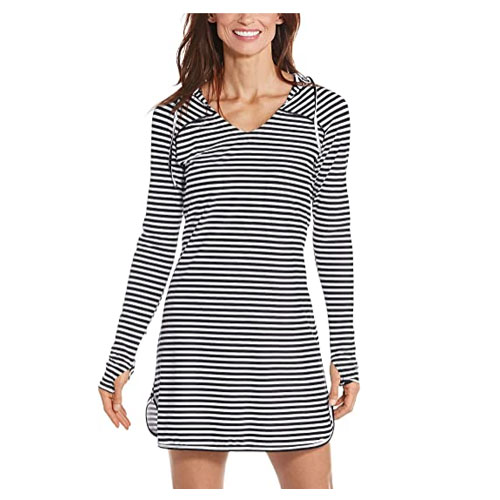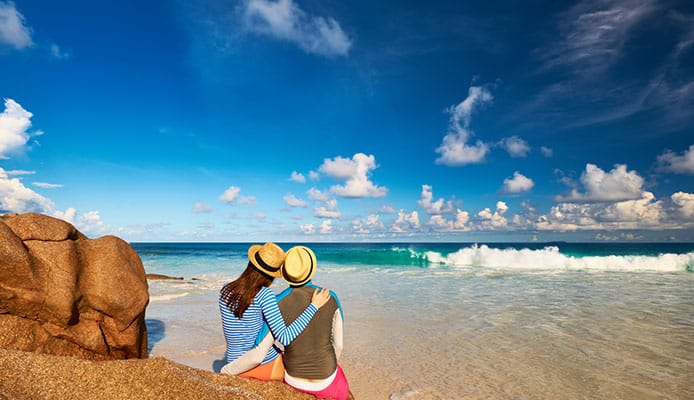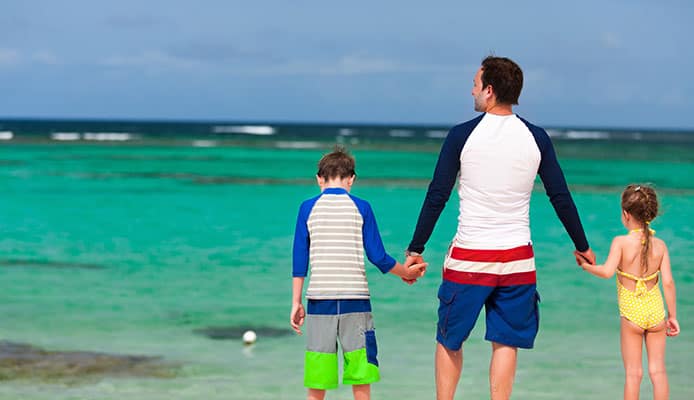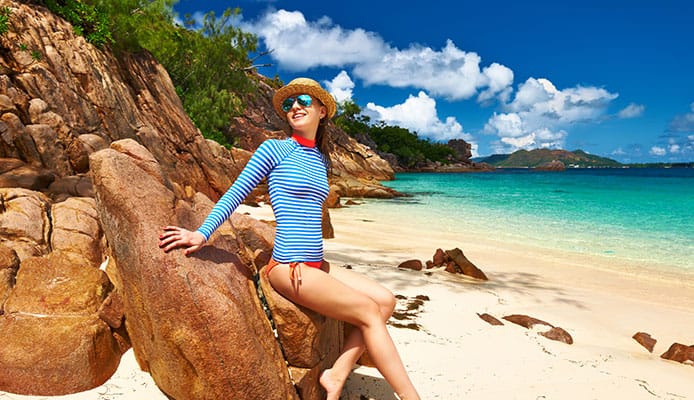
It’s fulfilling to spend time outside in the sun. This is something most of us enjoy, especially during the summer. You can engage in water activities, enjoy the beach, hike or play sports among other things. But it can quickly become unpleasant if you are exposed to the sun for too long. You can get sunburns which feel pretty bad, not to mention that prolonged UV exposure can have some long-term consequences on your skin.
This is why it’s important to protect yourself at all times. Of course, it goes without saying that you should always apply sunscreen when you plan on being outside for a longer period of time. However, to get the best possible protection, you should wear sun protective clothing instead of regular type.
Manufacturers design this sun safe clothing to block out the UV rays and save you from the potential harm which would occur if it reached your skin. These clothes have different features which we are going to present in our buying guide. You’ll be properly informed next time you look for the best sun protection clothing to throw on. But first, take a look at some excellent products we handpicked for you.
Let’s get started.
OUR TOP PICK
Hanes Men’s Long Sleeve
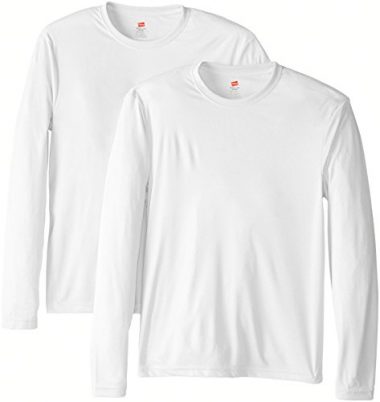
- Stand Out Features - Why We Love It
- Two shirts in the pack
- Fabric wicks moisture to keep you cool
- Dries very quickly
- Pull on closure
- Double needle stitching
EDITORS CHOICE
Baleaf Women’s Long Sleeve
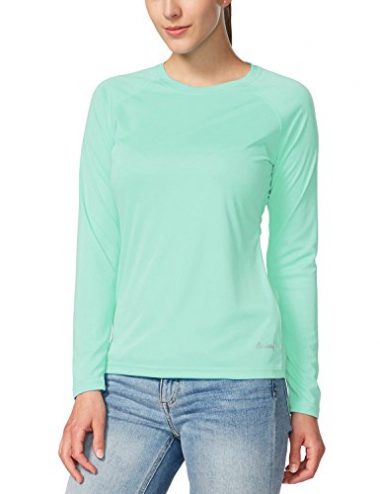
- Stand Out Features - Why We Love It
- Light and dries quickly
- Raglan sleeves allow better mobility
- Flat seams for comfort
- Good as an under layer too
BEST VALUE
ATTRACO Women’s Rashguard
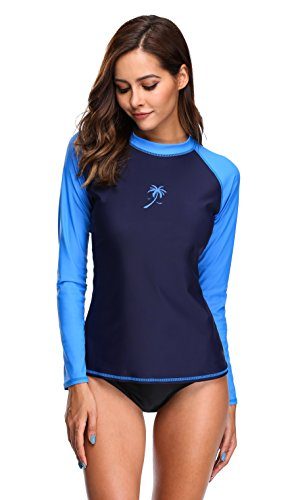
- Stand Out Features - Why We Love It
- Many nice designs to choose from
- More elastic than others
- Soft and thin
Columbia Breathable
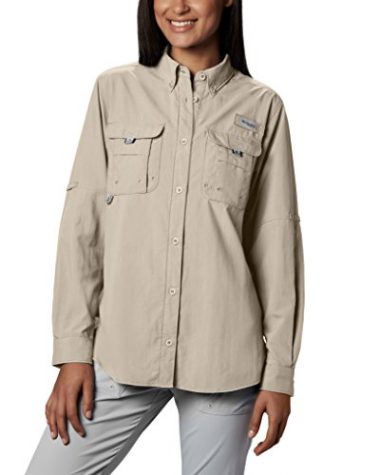
- Stand Out Features - Why We Love It
- Vents for air circulation
- Sleeves can be long or short
- Velcro pockets in chest area
Coolibar Women’s Beach Cover-up Sun Protective Clothing
- What Makes This Clothing Piece Stand Out
- Many great designs and sizes available
- ZnO treated fabric
- Hood with a cord
TOPtoper Unisex Sports
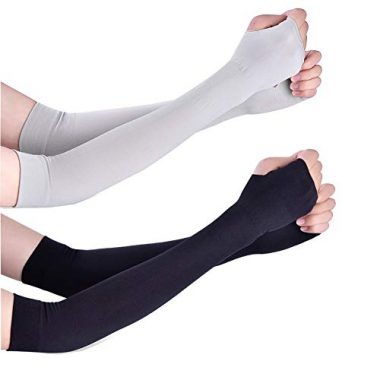
- Stand Out Features - Why We Love It
- One size for all
- Very elastic
- Very elastic
Coolibar Men’s Outpace
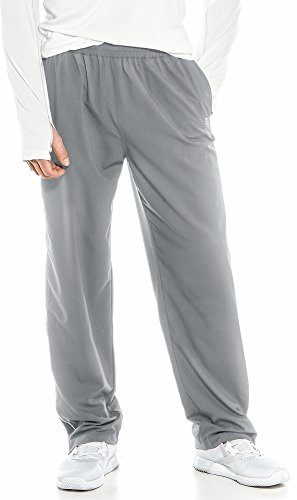
- Stand Out Features - Why We Love It
- Lightweight and comfortable
- Air circulation
- Drawstring
- Ankle zippers
- Reflective details
Coolibar Men’s
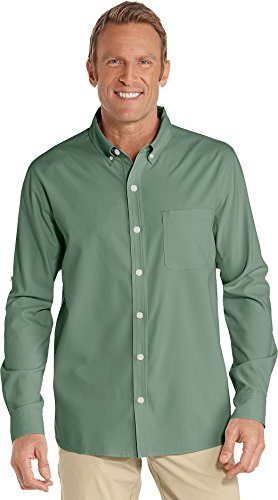
- Stand Out Features - Why We Love It
- Mesh vents under arms and in the back
- Material wicks sweat away from your body
- Durable, machine washed and dried
- Wrinkle resistant
Coolibar Women’s
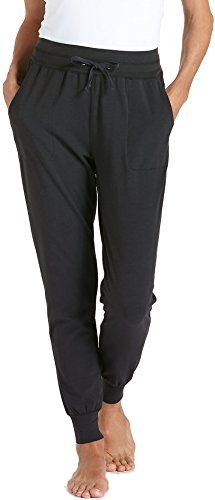
- Stand Out Features - Why We Love It
- Plus sizes available
- ZnO treated fabric
- Stylish
BASHERRY
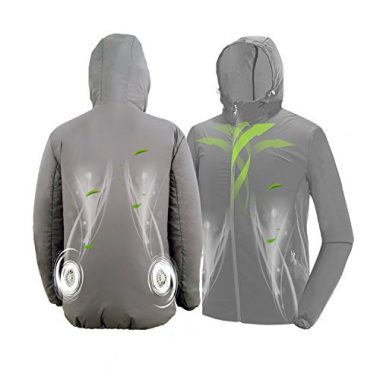
- Stand Out Features - Why We Love It
- Air-conditioned, two fans included
- Water and windproof
- Wear and tear resistant
- Hood
How To Choose A Sun Protective Clothing Piece – Buying Guide
You should choose your clothing based on the intended use. For example, if you go swimming you are going to want something that dries very fast and fits tightly. On the other hand, if you want something for hiking or fishing, then a looser fit can be a good choice, like a button down shirt with pockets. It goes without saying that your clothes should have high UPF, whichever type you choose. Take a closer look at things which determine how effective your sun safe clothing is going to be.
Fabric
This is one of the most important things when it comes to sun protective clothing. The fabric should block out UV rays, and prevent them from going through. Several factors contribute to the efficiency a certain material has. Some fabrics are naturally better at doing this, like polyester, nylon, lycra, wool or silk. They often don’t require being treated with chemicals.
On the other hand, cotton, rayon, flax and hemp need to be treated to increase their ability to stop UV rays. Manufacturers do this by adding certain substances to the material, that have a goal to absorb harmful radiation which otherwise wouldn’t be possible. You should always take a closer look at the specs of the clothing piece, even if the UPF rating is not clearly specified.
Another thing that determines this is the weave of the selected fabric. If it is tighter-knit, less light will be able to go through. Depending on the material, there are usually small holes between fibers which allow rays of light to pass. Denser clothing won’t allow this to happen. However, you should pay attention to stretching. If clothes don’t have elasticity, they can stretch too much and lose some of their UV protection because these spaces we talked about become larger.
You probably noticed throughout the sun protection clothing reviews that we often pointed out that products dry off quickly. The reason for this is that sometimes wet materials give you reduced sun protection, in which case you are more susceptible to sunburns.
Another fabric worth mentioning (which is very resistant to UV rays) is dyed denim, which gives you excellent protection. However, it isn’t very breathable and you can feel very hot wearing it in the sun. But if you don’t have any alternative lightweight clothing and need to go outside in the hot sun, denim jeans and jacket can be very handy.
Color
Some colors are better at absorbing UV rays than others. Certain dyes used in fabrics will greatly increase its ability to block harmful radiation. In general, darker colors are better for this purpose. Not just this, but more vivid colors have proven to be more effective compared to pale ones. This being said, any color can be great if it’s made to have UV protection. This is a big advantage of sun protection clothing – there are numerous colors and designs available which allow you to be fashionable and protected at the same time.
UPF Rating
It isn’t easy to see if a clothing piece will give you good protection just by looking at it. Sure, you can lift it up and see how much light passes through, but this isn’t always a certain indicator. Look at the label and see if there is a UPF rating for that specific product. This way you can have greater piece of mind when wearing it. In addition to this, UPF clothing is designed to be lightweight and breathable, to prevent you from overheating.
Today, the UPF (Ultraviolet Protection Factor) rating is pretty standardized around the world, and it’s tested in a laboratory. The ratio is calculated using an instrument with an artificial light (UV) source, and precisely shows just how much UV radiation is able to go through. This is then presented with a number – a larger number means better protection.
Most products in our sun protection clothing reviews have 50+ UPF which equals excellent protection. This number represents a certain part of light that is able to reach the skin through clothes. For example, if a shirt has UPF 50, this means that only 1/50th part of light can pass through, in other words only 2%. You can see how this is very effective. On the other hand, a regular white cotton shirt usually has UPF 5, meaning that 20% of UV rays are going to reach your body.
You might also like: Benefits Of UV Protective Clothing
Durability
Compared to regular clothing, sun protective clothing often needs to be more long-lasting. It should never change its characteristics when being exposed to the sun. Regular fabrics will often show signs of deterioration from sunlight. UPF clothing was specifically designed for this, but not all products are the same. Always inform yourself how the clothes you’re interested in performed over time.
They are also often in contact with sunscreen and sweat, meaning you need to wash them. Most of our products are safe to wash in a machine, but be sure read the label. The reason for this is that some lower quality products can lose their UV protection by washing it out. The best sun protection gear should be able to withstand many washes without losing any of its protective abilities.
As we mentioned earlier, the fabric shouldn’t stretch out, because this way it won’t cover your skin properly. In addition to wear and tear resistance, the clothing you buy should remain firm after many uses. This is why it’s usually better to spend a bit more than be forced to buy a replacement product because the first one just wasn’t good enough.
Use
Depending on the circumstances you’re going to be using your new clothes in, some are obviously better than others. One thing is certain, always try to cover large portions of your body in warm and sunny weather. This is why you should look for something with long sleeves and legs. The more additional covering features it offers, the better.
The reason you should pay attention to this is that sun damage accumulates over time. It’s not just the sunburn which goes away in a few days. Permanent damage can occur, in other words if you are exposed unprotected you have much higher risk of developing skin cancer. In addition, even though not nearly as horrifying, your skin can age faster, and wrinkles will start showing.
FAQs
Q: Do clothes protect from sun?
Yes, all clothes protect you from the sun to some extent. You should try to cover your body properly. If you’ll be spending the whole day in the sun, it’s recommended to wear shits with long sleeves, and pants with long legs. Some clothes even give you extended coverage, like flip-up collars, cuffs, hoods and so on. These can be very useful. A good idea is to combine clothing with sunglasses and hats.
The material absorbs a certain amount of rays, functioning as a protective barrier. As we already said, many factors come into equation when determining just how efficient your protection is going to be. Denser weave will give your clothes better ability to stop UV rays. Also, if your clothing piece doesn’t fit you like it used to and became baggy after long use, you should consider replacing it.
Q: What is the SPF of clothing?
SPF stand for Sun Protection Factor and it is something common for sunscreens. Clothing manufacturers generally use the term UPF because it’s a bit different. SPF only measures UVB protection, and doesn’t show UVA parameters. On the other hand, UPF measures protection against both UVA and UVB. Chemical UV absorbers and colorless dyes are used to increase this number.
Like we discussed, you should look for a higher UPF rating for better protection. The highest specified UPF is 50+, and clothing with this rating will absorb over 98% of the harmful rays. The lowest UPF for a piece of clothing to be considered sun-protective is 15. If the value is lower than this, the manufacturer can’t state that it’s going to protect you from the sun.
Q: What colors can block out UV rays and which one is the best to wear?
As you already know by now, darker colors are usually better at blocking out UV rays compared to lighter ones. For this reason, you have a smaller chance to get sunburns when wearing a black t-shirt compared to an untreated white one. This goes for other colors too. If your clothing is pale, it will let through more rays. Some strongly colored dyes are very efficient in giving clothes the UVR protection needed.
Chemicals used on clothing don’t always have to be colored. The technology advancement has made it possible to treat clothing and change its characteristics while color remains the same. For this reason you have vibrant colored clothes of all types which is also excellent at protecting your skin. To wrap up, the best sun protection clothing to wear is treated and with a high UPF rating, but if that isn’t available for you then opt for darker, heavier and denser clothing.
Q: Who should wear sun protective clothing?
Obviously everyone should protect themselves from the sun. But some groups of people are more at risk of developing a skin condition compared to others. If you are naturally more sensitive to the sun, you must never forget to wear protective clothing and put on enough sunscreen.
Groups that are generally more vulnerable are people with fair skin and children, among others. Their skin can’t deal with UV rays so it burns up easily, which can cause other problems down the line. This is particularly true for kids, so be sure to fully protect your child when you go to the swimming pool or the beach. Skin damage which occurs in childhood can have long-term consequences in adult years.
In addition, UV radiation is higher in certain conditions. For example, if you are at a high elevation (mountain for example), the impact sun has on your skin will be stronger. This is also true for people living near the equator, because of the angle at which the sun rays reach you. Surroundings can affect this too. Snow or water reflect the UV rays and make them stronger in the process, so you often need more protection than you normally would, which many people forget.
Finally, if you are taking certain medications, you may need to additionally protect yourself. Some medications, especially ones that treat your skin, can change the way you react to the sun. If you are in this group, consult your doctor about how much time you should be spending in the sun. Not even people who have naturally darker skin should take all this information lightly. Even though sunburns are not that common, skin cancer is something which occurs to everyone, which is why responsibility through protection is required.
Q: How should I care for my sun protective clothing?
Usually it doesn’t require any particular maintenance compared to regular clothes. Most can be washed in a machine, and some can even go in the dryer. However, there are products for which it is recommended to be washed by hand. It’s inevitable that some of the protection clothes have will perish with time, but that shouldn’t happen immediately.
When you buy a clothing piece, read the instructions that came with it. That’s the best way to ensure its durability. Some products which are made from synthetic materials shouldn’t be ironed or dry cleaned, since that could irreparably damage the fabric.
In addition to all this, there are laundry additives that can increase the UPF of your clothing. You can add them to regular clothing too, and receive greater protection. They have an active ingredient which stays in the material for a certain number of future washes, usually about twenty. Even though it won’t give you UPF 50+, some tests have shown that additives can increase UPF to about 30 on cotton t-shirts, which is a significant increase compared to 5-10 UPF they have when untreated.
Q: Can sun protective clothing replace sunscreen?
Even though sun protective clothing gives you substantial protection, your best bet is to combine the two. This way you will have best protection, without the nuisance of re-applying the sunscreen whole day. It goes without saying that you should still put sunscreen on all exposed areas of your body, for example hands or face if you’re not wearing a hat.
Globo Surf Overview
Sun protective clothing is the best form of sun protection you have available every day, no matter if you are on the beach or in your back yard. It’s smart to be mindful of your health and protect it before anything happens, so don’t leave your skin exposed to the hot sun and harmful rays.
Always try to cover up as much of your body as possible. We know this sounds uncomfortable, but luckily the best sun protection gear is lightweight and won’t make you overheat in high temperatures. It often allows air circulation too, so you can really get protected while still feeling good. Choose your favorite clothing pieces, combine with other sun protective gear, and you’re ready to go!
Have you tried a clothing piece that made it onto our list? Was it efficient in protecting you from UV rays? Was it comfortable to wear? Please share with us in the comment section below.


